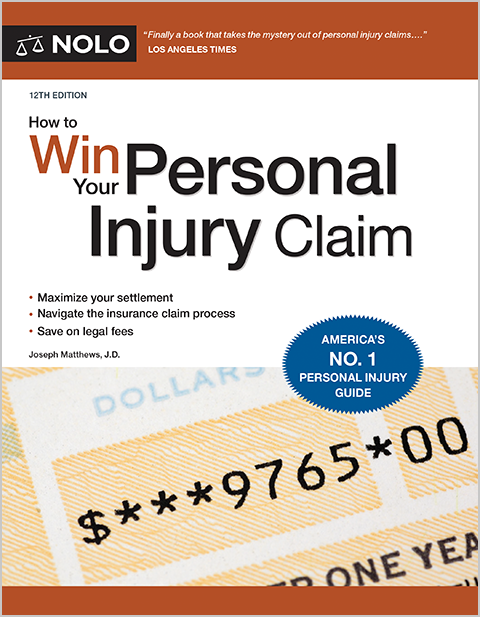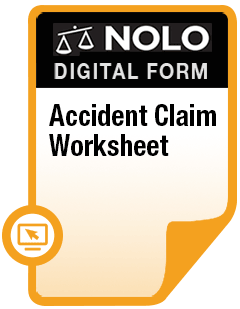Learn what toxic mold is, where you might find it, common health problems it's linked to, and who you might sue for an infestation or exposure.
Mold and "toxic mold" have long been the subject of health concerns and lawsuits. If you've become sick or suffered property damage because of a mold infestation, you might be able to file an insurance claim or a lawsuit to get compensation for your injuries and losses, including the cost to get rid of the mold (called "mold remediation").
Mold claims typically involve disputes over property damage, personal injury, and professional malpractice. You can bring a claim against anyone who intentionally or negligently caused or contributed to your mold problem. The first step is to identify the kind of mold that's involved. If it's associated with health problems or has caused property damage, you then need to figure out who's responsible for your mold infestation or exposure.
We begin by explaining what mold is, the kinds of molds that can be most dangerous, and where molds usually are found. From there, we'll walk you through the likely potential targets for mold claims (called "defendants").
What Is Mold?
Mold is a common term for fungi that are found in all environments all around the world. Mold can cause serious property damage and require expensive cleanup. Mold can also cause some people to get sick.
According to the Centers for Disease Control and Prevention (CDC), the health effects of mold exposure include:
- sneezing
- coughing
- wheezing
- asthma symptoms
- lung damage in people with immune impression,
- and the development of asthma in children.
There are over a thousand different varieties of indoor mold. The good news is that, absent mold allergies (discussed below), a moderate amount of mold in buildings where you live, shop, or work generally isn't harmful to your health. Most mold-related health problems arise only when there are high mold concentrations.
What Is "Toxic Mold"?
The term "toxic mold" is somewhat misleading. It's use has caused misunderstandings and confusion regarding the health-related dangers of mold. In high enough concentrations, all molds—toxic or otherwise—can cause health problems. For this reason, some sources refer to all mold as "toxic mold."
Strictly speaking, though, there's no such thing as toxic mold. A few types of mold are called "toxigenic," meaning that under certain conditions they can produce small molecular toxins called "mycotoxins." Mycotoxins are usually spread by mold spores and can cause potentially serious health problems.
In contrast with mold in general, which is found virtually everywhere, toxigenic molds are less common. Two of the best-known examples are Stachybotrys chartarum and Aspergillus.
Stachybotrys chartarum. Sometimes called S. chartarum or Stachybotrys atra, and popularly known as "black mold," Stachybotrys chartarum is a greenish-black fungus that requires a moist environment in which to grow. It's most commonly found in flood-damaged buildings. Stachybotrys chartarum mycotoxins are quite potent.
But there's evidence that only a few strains of Stachybotrys chartarum are toxigenic. More research is needed.
Aspergillus. Aspergillus is a family of molds, and only some aspergillus molds are toxigenic. The mycotoxins produced by toxigenic strains of Aspergillus are less potent than Stachybotrys chartarum mycotoxins, but infestations of Aspergillus mold are far more common. Aspergillus is common at low levels throughout the environment and doesn't generally pose a health risk. It's considered potentially hazardous only in unusually high concentrations.
Where Mold Is Found and How It Travels
Mold is pretty much everywhere, all the time. Its many forms are so common, and it travels so easily, that trying to make your home (or any other building) totally mold-free is next to impossible.
Because mold thrives in warm, damp, and humid places, indoor mold is most commonly found in areas of high moisture and low ventilation. Bathrooms and basements are prime targets. It's often found in and around leaky roofs, pipes, windows, or anyplace there's been flooding. Potted plants are a favorite location.
Mold spreads by generating spores. Mold spores are remarkably durable and can survive for long periods even in harsh, dry environments where mold itself couldn't grow. Airborne spores enter buildings through open doors and windows. Spores also can be carried indoors by you and your pets. Once inside, they get blown everywhere through air conditioning, heating, and ventilation systems.
What Are the Health Risks From Exposure to Mold?
Relatively little is known about the health effects of exposure to mold. Medicine knows that molds can trigger allergic reactions in those with mold sensitivities. In high concentrations, molds are associated with several health issues. That aside, there aren't many established links between mold exposure and particular medical diagnoses.
Allergic Reactions
Like allergies in general, sensitivity to mold varies from one person to the next. Symptoms typically include nasal stuffiness, irritated eyes, coughing, wheezing, or skin irritation. More severe reactions may include flu-like symptoms, fever, and shortness of breath.
Aspergillosis
Aspergillosis is the name for a family of diseases related to the Aspergillus mold. Healthy people can contract aspergillosis, but it's most common in those with asthma, cystic fibrosis, or other pre-existing lung conditions or health problems.
Toxin-Related Illnesses
In recent years, many have tried to link exposure to toxigenic mold with serious diseases and injuries, including infant lung hemorrhaging, cancer, brain damage and other cognitive deficiencies, fibromyalgia, chronic fatigue syndrome, reactive airway dysfunction syndrome, and various other health problems. Although these efforts have been the subject of much media attention, the medical and scientific evidence for such links is shaky, at best.
Mold in a Building You Own
If you discover a mold infestation in your home, apartment, condominium, vacation home, or some other building that you own, here's a list of the defendants who might be legally responsible.
When you file a lawsuit, you don't have to choose between defendants. Include anyone who might share responsibility for your losses. Depending on the facts, your case might involve some or all of the potential defendants listed below, or others not listed here. You'll probably need the help of an experienced lawyer to identify all of the potential defendants in a mold claim.
Homeowners' Insurance
In most cases, your first step will be to file a homeowners' insurance claim. You'll need to carefully read your policy to find out what type of mold infestation is covered and what is excluded from coverage.
Was the Mold Caused by a "Covered Peril?"
Homeowners' insurance typically covers mold only when it's caused by a "covered peril." A peril is an event that damages your home or belongings. The perils covered by your homeowners' insurance are listed in your policy. Homeowners' insurance typically doesn't cover mold caused by neglect or lack of regular upkeep, including termite damage.
Examples of covered perils that can cause mold include:
- water heater ruptures and leaks
- burst pipes
- appliance malfunctions
- toilet overflows, and
- water damage caused by extinguishing a fire.
Some insurance companies limit the amount they'll pay for mold removal. Read your policy carefully and call your insurance agent if you have questions about what your policy covers.
Exclusions
Most homeowners' policies also have a list of "exclusions," meaning perils that aren't covered by the policy. For example, standard homeowners' insurance policies generally exclude flooding. If flood damage caused your mold problem, your homeowners' insurance won't cover it unless you purchased flood insurance.
In dealing with your insurer, you have at least one ace in your hand. Insurance companies are bound by a legal rule called the "covenant of good faith and fair dealing." This rule means that, when dealing with a policyholder, the insurance company is held to a high standard of conduct.
In practical terms, if your insurance company drags its feet, tries to trick you or weasel out of the terms of your homeowners' policy, or otherwise plays fast and loose with you, you might have a bad faith claim for violation of the covenant of good faith and fair dealing.
Find out what you need to know about homeowners' insurance and how to be fully covered.
Builder or Contractor
If a mold infestation results from shoddy construction or materials, you could have a legal claim against the builder, general contractor, or one or more subcontractors for negligence—the failure to use reasonable care in the construction process.
Some states require builders or contractors to guarantee their work in the form of a warranty. You might be able to claim that the builder or contractor violated or "breached" such a warranty.
Architect or Engineer
If the mold infestation is the result of poor architecture or engineering, such as a failure to include proper ventilation in the design of the home, you may have a claim against the architect or structural engineer for negligence.
Some states require architects or engineers to guarantee their work with a warranty. If that's the law in your state, you can claim that the architect or engineer breached that warranty.
Construction Supplier
If you can show that the mold infestation in your home was "imported" into it by way of moldy construction materials such as siding or drywall, you might have a claim against the commercial supplier of the mold-infested materials.
Prior Owner
Most states require the seller of a home to disclose any known problems such as the presence of a mold infestation. If the prior owner knew of the presence of mold but didn't tell you when you bought the place, the owner could be liable to you for violating these disclosure laws.
Learn more about how to recognize potential mold problems before buying a house.
Realtor
The seller's realtor (who's an agent of the seller) also might be liable for selling you a home with a mold infestation.
Property Inspector
If you hired a property inspector to inspect your home before you bought it, the inspection company might be liable to you if it missed a mold infestation. You'll need to carefully review the inspector's report, especially the language regarding the scope of the inspection and any disclaimers.
Condominium association
Because of the special status of owners in a condominium complex, the condo association can be on the hook for a mold infestation, especially if it occurs in a common area.
Mold in Rental Properties
Under the landlord-tenant laws of most states, landlords are subject to a legal doctrine called the "implied warranty of habitability." This warranty makes the landlord responsible for keeping the rental property free of health hazards, including mold infestations.
Because the implied warranty of habitability is an obligation imposed by state law—whether the landlord likes it or not—it overrides any language in your lease that's inconsistent with this responsibility. Be skeptical and persistent if your landlord denies responsibility for a mold infestation under the terms of your lease.
Learn more about your landlord's liability for mold problems.
Mold at Your Place of Work
If you've developed health problems because of a mold infestation at your place of work, you might be able to file a workers' compensation claim. Whether workers' compensation will cover your mold-related injuries—and prevent you from taking your employer to court—is an evolving area of the law and will depend on the particular circumstances of your case.
Learn more about worker's compensation and your right to benefits.
Mold in Schools
It's no secret that many schools are old and in need of repair, which is a recipe for mold growth. If you're a student or teacher at a school with a mold infestation, you might be able to sue the school district and others responsible for building and maintaining school facilities, but it won't be easy.
Public schools and other government agencies have sovereign immunity, a special legal protection that shields them from many lawsuits. You'll have to follow special rules, which vary from state to state. A lawyer can help you figure out how to file a lawsuit against a school and whether your claim is worth pursuing.
The Environmental Protection Agency (EPA) publishes a guide to Mold Remediation in Schools and Commercial Buildings.
Resources on Mold
The EPA has reliable information about mold on its website, including articles about:
The American Industrial Hygiene Association (AIHA) has also put together a Mold Resource Center with helpful infographics, FAQs, and resources.
Getting Help
The science behind mold can be complex, and proving a link between health problems and mold exposure is especially difficult. You'll want a lawyer on your side who has experience with mold claims. If you decide to look into a claim, here's how you can find the right lawyer for your case.


